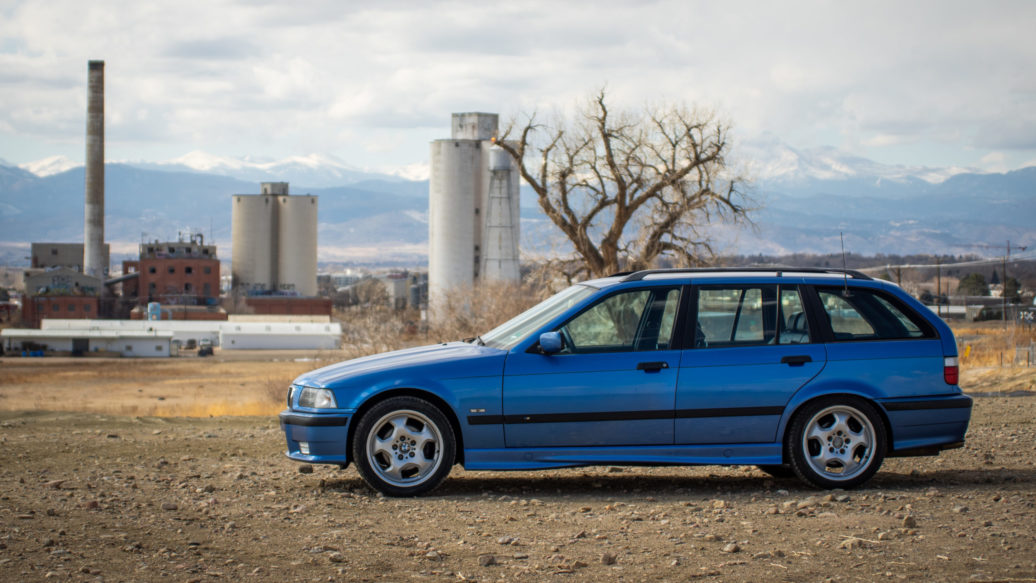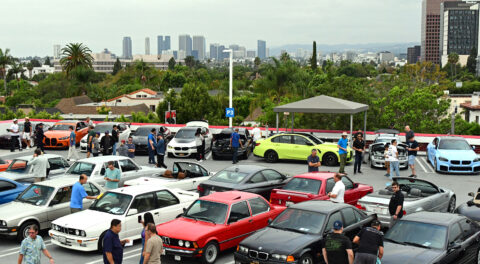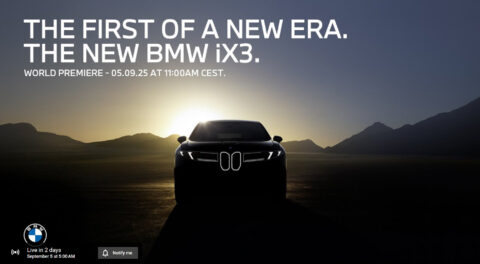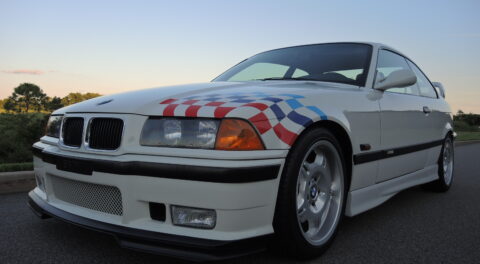The year is 2021, and if you are a fan of the E36 and wagons, oh, it is a glorious one! That’s because our current year is the magic quarter-century mark—the point at which the E36 Touring has become eligible for import to the United States.
The BMW wagon was born in a garage a generation before the E36, when a BMW bodywork specialist named Max Reisbock built a wrecked E30 323i into a Touring wagon. He showed it to his supervisor, and history was made. Shortly thereafter, BMW refined the design and put it into production.
The E30 wagon was so popular that it remained in production for several model years into the E36’s domain in the form of Design Editions; these were some of the best Touring models, but when the E36 Touring was finally released, its fluid design was a worthy successor. Now, thanks to the Department of Transportation’s 25-year rule, we can bring them into the states!
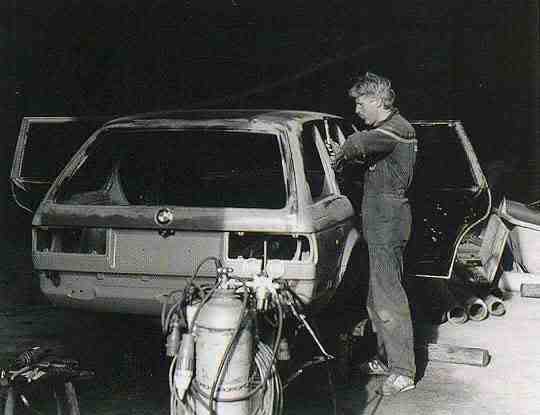
Max Reisbock building the first E30 Touring.
I don’t personally import cars, but I have several good friends who do, and they have found some stellar examples for me over the years. I’ve also lost money on virtually every one of them, but I was probably a little early on the leading edge of the E30 Touring wave. They say that the definition of insanity is repeating the same mistakes and expecting different results, but damned if I can’t turn a good Touring down when one comes to me. When a friend asked me if I wanted first shot at his incoming E36 wagon, I emphatically said, “Yes!”
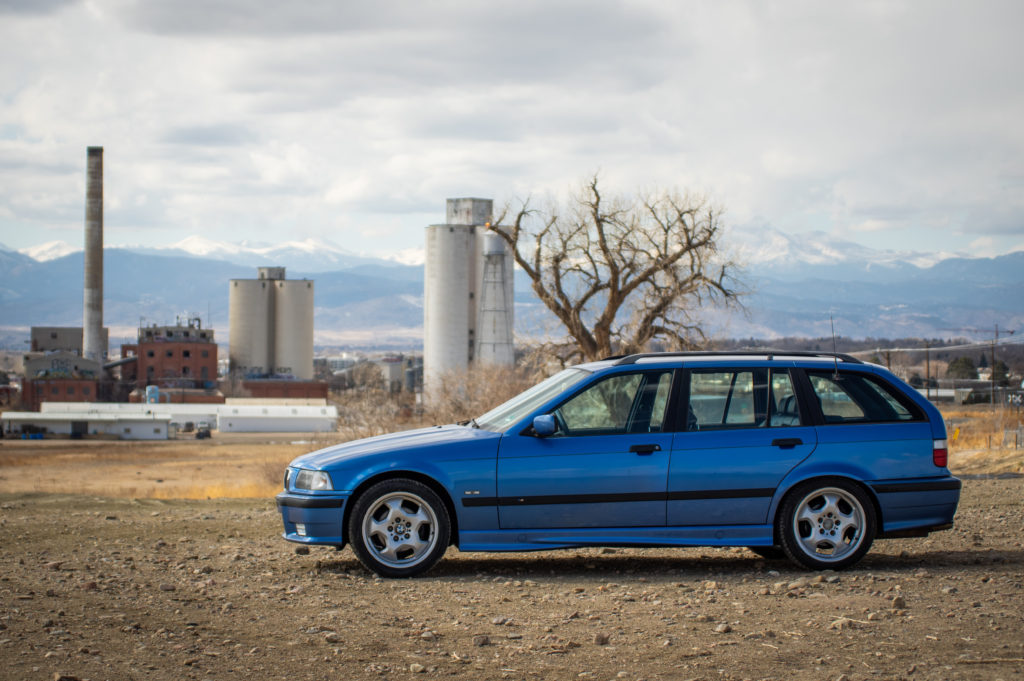
A BMW Individual E36 Touring is a worthwhile addition to any BMW collection.
The car in question was a 1996 BMW Individual 323i Touring finished in Estoril Blue over a blue-and-black interior. At first glance it looked like an M3, despite the 2.5-liter M52 engine under the hood. This was thanks to the M Sport package, M Sport suspension, and special-equipment and exclusive-package options listed on the build sheet. Estoril Blue was a color normally reserved for M cars; it was further enhanced by the M Sport front bumper, side skirts, and rear valance. The car even had M Contour wheels. All it needed was the M3 front spoiler and mirrors to complete the look.
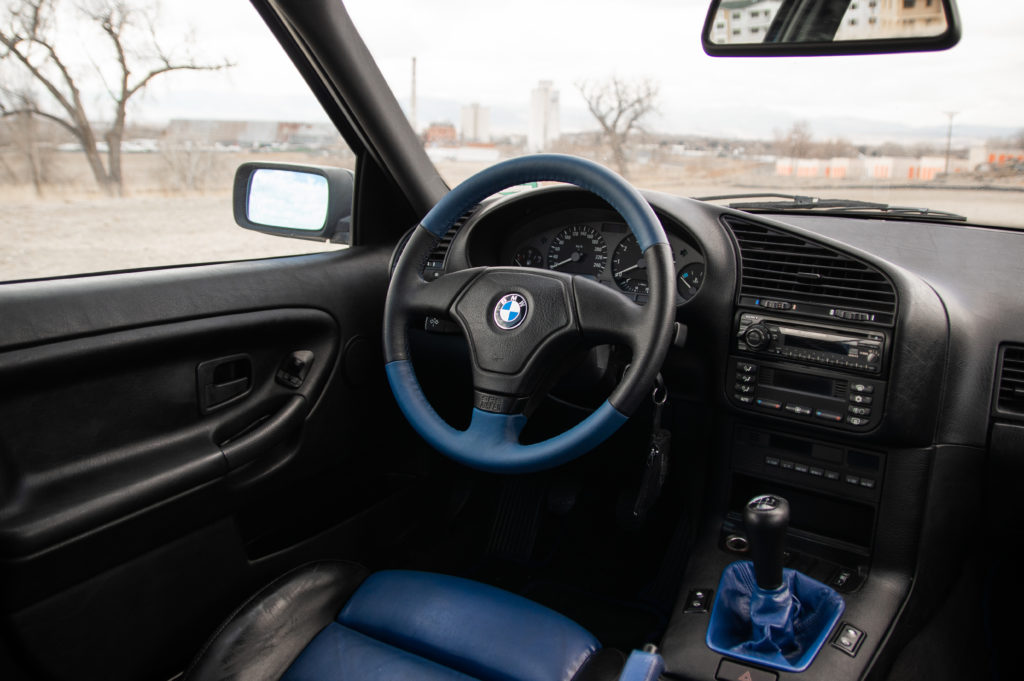
A BMW Individual blue-and-black interior marks this as a special car.
Inside was more M3 kit in the form of a Euro three-spoke sport steering wheel and sport seats. The kicker was the BMW Individual blue and black color theme: The steering wheel, center seat cushions, shift boot, and emergency-brake handle and boot were all blue. It was so quintessentially 1990s that I could barely stand it! Typical of a Euro-market Touring , it had rear headrests, manual rear windows, and the minimalist seven-button on-board computer. I couldn’t send my money fast enough, buying it sight unseen—insanity be damned!
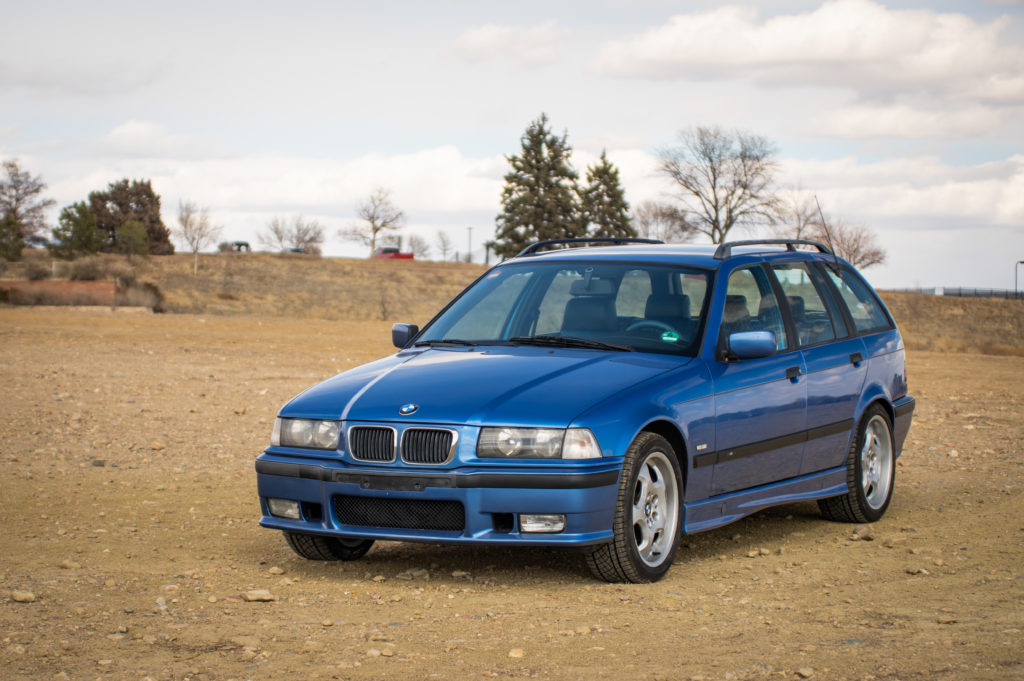
The E36 Touring design is fluid and fitting.
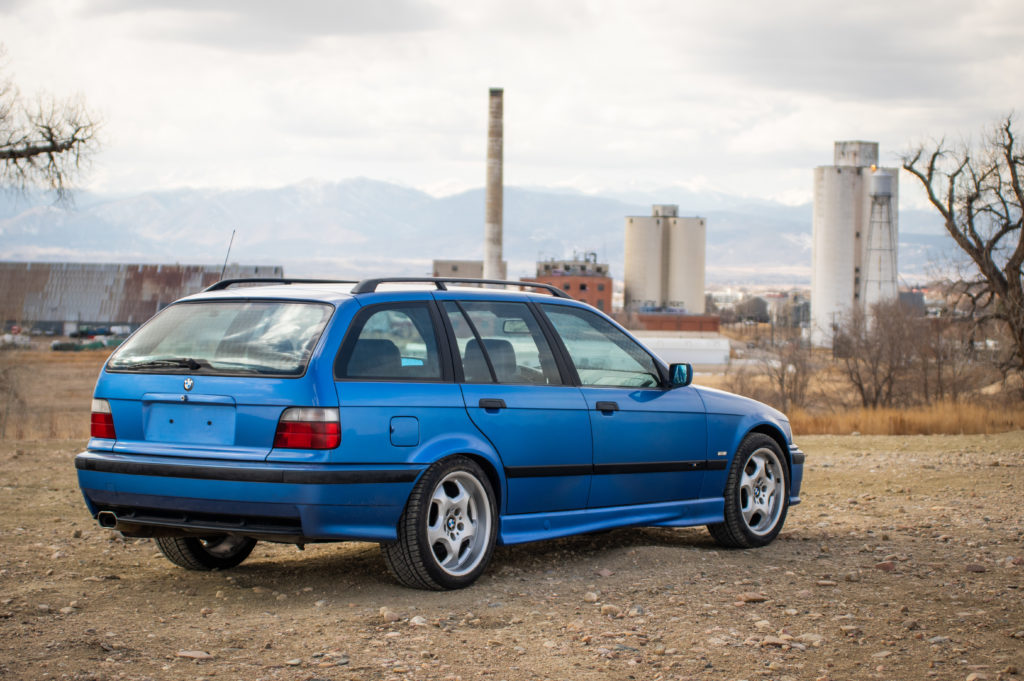
Several weeks later it showed up on a Sunday afternoon, and as it was unloaded from the truck, it sparkled in the warm winter Colorado sunshine. I was awestruck! Estoril Blue is one of the best colors in the E36 catalog, and it was perfect on the lines of the E36 Touring. From the front, it looked just like a five-door M3, while the rear three-quarter angle took on an arrow theme thanks to the extended hatch area, M Sport side skirts, and sloped hood.
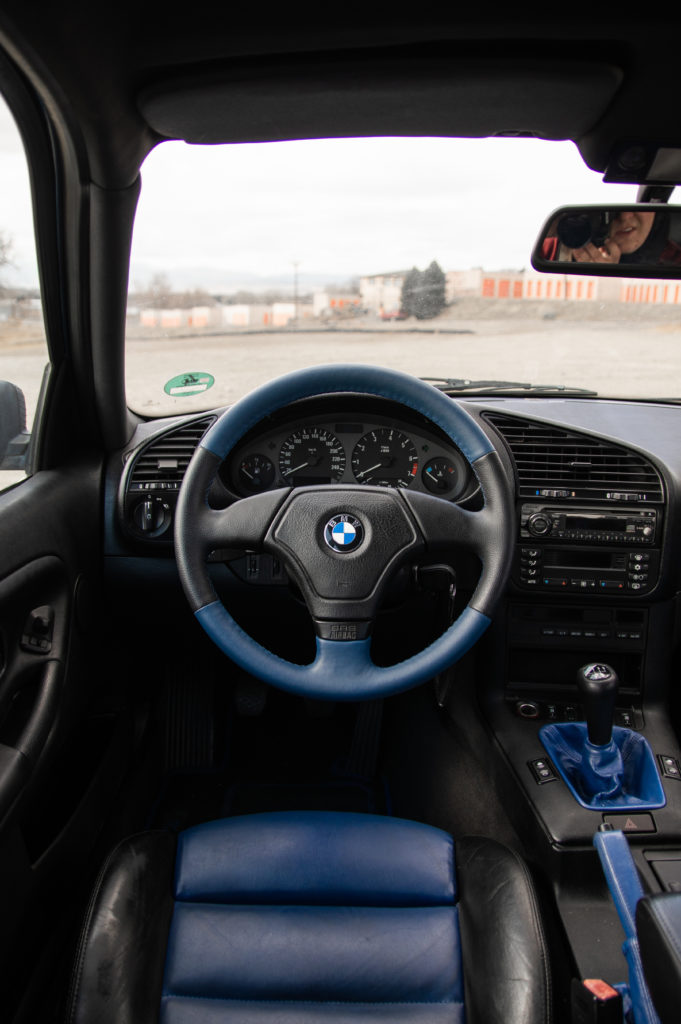
The three-spoke steering wheel, blue sport seats, and Euro speedometer define the interior.
Inside it was unmistakably E36, with the Darth Vader helmet-like vents framing the driver-centric cockpit. The E36 has the most driver-focused cockpit of any BMW, a testament to the core values of 1990s-era BMW design logic. Behind the blue steering wheel was a European cluster with closely spaced kilometer increments laid out on the speedometer not unlike a fine watch. I laughed out loud at the blue interior accents; the sheer audacity it took to make this car just made me smile.
Compared to the pedestrian wagons from other marques available to the U.S. market at the time, I wondered how it would have actually sold if it were available here. I also wondered if, being an early E36T, it wasn’t some sort of dealership display model designed to sell more pedestrian examples of the E36 wagon. Either way, seeing it person it was clearly special.
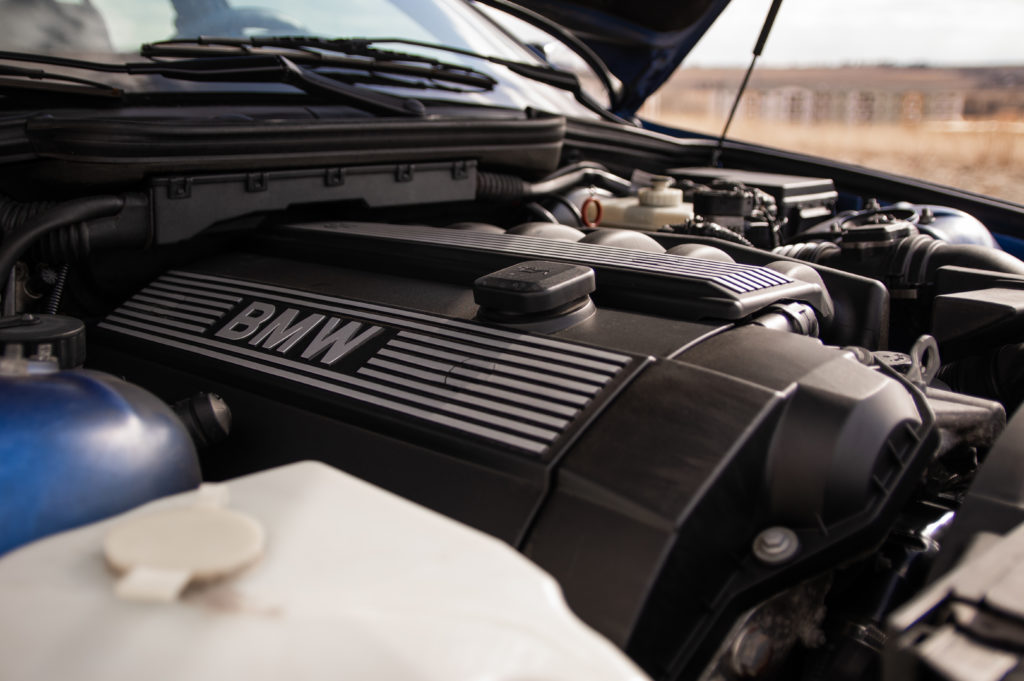
The M52 is an honest, old-school BMW engine.
I hopped in, fired it up, and took it for a ride. Despite Colorado’s thin air, the 2.5-liter M52 was refreshingly spry. The M52 is an honest engine, requiring you to rev it to extract its 168 horsepower, but combined with the agility of the E36’s multi-link suspension, the blue wagon never left me wanting more performance. I cleared the bonds of civilization into the wilds of the Rocky Mountain foothills, where the monotony of straight roads gives way to high-consequence sweepers, and the onslaught of suburban crossover drivers fade blissfully away to desolate tarmac.
By now the oil was warmed up, and it was time to visit the redline at every opportunity. As I giggled my way from apex to apex, I was reminded of just how good a nice non-M E36 is. I had planned on swapping an M engine into this car, but sometimes it is best to just let the car speak to you—and this E36 was perfect just the way it was.
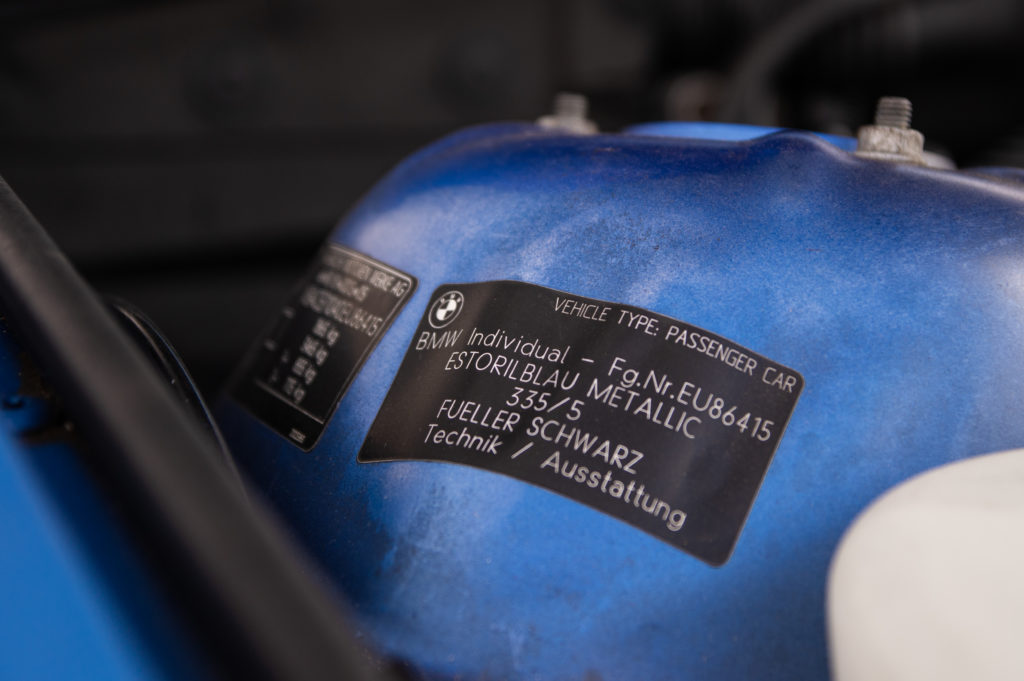
BMW Individual built this E36 Touring.
My overwhelming impression was just how rare and special this E36 is. I wanted desperately to keep it, but having sold my M5 Touring to fund the Husky bush plane, and my S54-swapped E46 wagon to fund a much-promised kitchen remodel to my wife, there was no way I could justify hanging on to it. I reluctantly posted a lone picture of it at an inopportune time on Facebook, and it found its new home within minutes. I was reticent to relinquish it, but it would stay local with a wagon-fanatic friend of mine. At least I’d get to visit.—Alex McCulloch
[Photos courtesy of Peter Thompson.]

